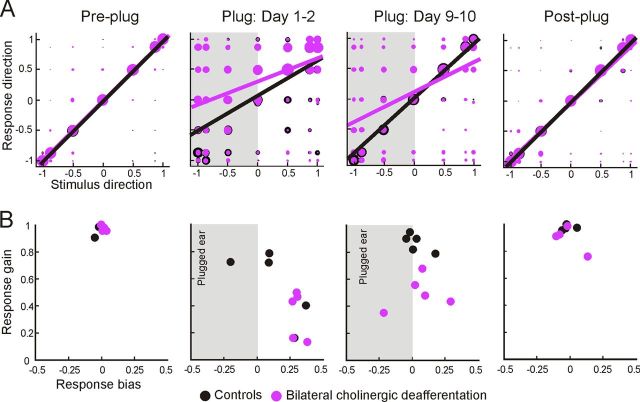Figure 6.
Changes in response bias and gain during adaptation to a unilateral earplug. A, Confusion matrices of approach-to-target responses for animals with bilateral cholinergic deafferentation and controls. Stimulus and response locations have been transformed in azimuthal space so that the posterior and anterior portions of the circular response space are “folded” onto each other, effectively turning all errors into lateral errors. Regression lines indicate the best linear fit of the stimulus–response function before plug insertion (Pre-plug), at two time points during training with the earplug in place (Plug: Day 1–2, Plug: Day 9–10), and after plug removal (Post-plug), for animals with bilateral cholinergic lesions (purple) and controls (black). Perfect performance equates to a slope of one and a y-intercept of zero. Deviations from these values indicate impaired localization performance. Note that the responses become biased toward the non-occluded ear when the earplug is first inserted. B, Plots illustrating changes in response bias (y-intercept) and response gain (slope), calculated from the stimulus–response linear regressions, for individual animals in both groups. Shaded areas indicate where the left ear was plugged.

